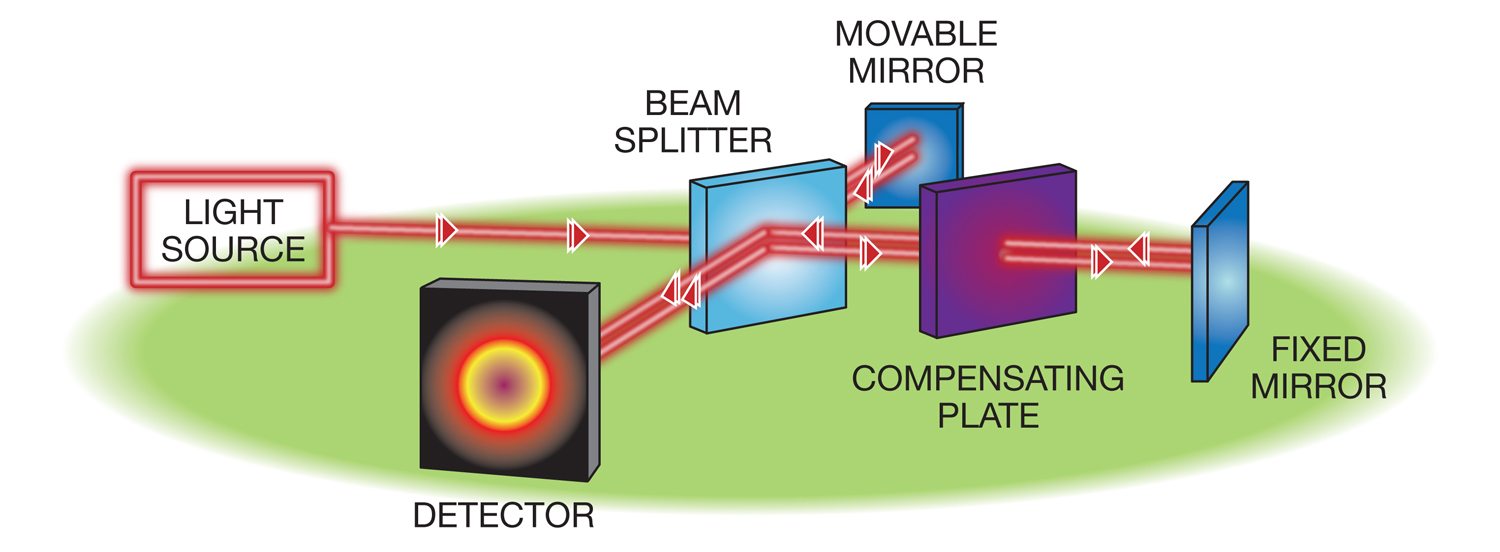About This Webinar
Fourier transform infrared (FTIR) spectroscopy is a spectroscopic technique that relies on optical interference to generate a spectrum. It enables spectral analysis covering a wide range, 1100 to 2600 nm; requires very little or no sample preparation; and can be employed to test gas, liquid, and solid targets.
Advancements in microelectrical machines (MEMS) technology and solid-state detectors allowed FTIR spectrometers to be inexpensive and portable, enabling emerging market growth. This webinar reviews the basic theory behind the Michelson-Morley interferometer and applies it directly to today’s modern MEMS-based FTIR engines. The presenters will compare traditional grating-based spectrometers with FTIR, and the associated technological limitations, such spectral coverage, signal-to-noise ratio, and noise induced by mechanical vibration.
Participants will witness a live MEMS FTIR product demonstration and be provided with an outline of common applications. The presenters will also examine some market challenges and solutions, concluding with a Q&A.

Depiction of a Michelson-Morley interferometer's components. Courtesy of Hamamatsu Corp.
Learning goals:
- Learn the basic theory behind Michelson-Morley interferometer.
- Become familiar with the basic setup of FTIR spectrometer.
- Understand performance trade-offs associated with the limitations of the hardware, such as mirror movement, sensitivity, detector noise, and signal-to-noise ratio.
- Learn how to compare traditional grating-based NIR spectrometers with new MEMS FTIR spectrometers.
- Become familiar with data analysis and portrayal.
- Become familiar with the most common applications of FTIR spectroscopy.
Who should attend:
Engineers, R&D scientists, manufacturers, marketing professionals, and others whose work involves the selection, production, or sale of FTIR instruments. All those working with FTIR who want to know more about it and its applications, as well as those who are already familiar and looking for a refresher or for updates on techniques and the current market.
About the presenters:
 John D. Gilmore has been characterizing leading-edge photonic devices for over three decades. He has developed sophisticated test and measurement capabilities, enabling precise characterization of image sensors and spectrometers. In addition, he has vast knowledge of the operation, optimization, and practical use of photonic devices, with particular emphasis on image sensors, spectrometers, and Raman modules. He received his B.S. degree in electronic engineering technology (EET) from Capital Institute of Technology, Laurel, Md., in 1986, and received his M.S. degree in electrical engineering with a concentration in solid-state devices and material processing from the New Jersey Institute, Newark, N.J., in 1993. He joined Hamamatsu Corp. in September 1986 and is currently the spectrometer business development manager. He is currently involved with the development of application-specific inspection equipment, general spectrometer marketing, and advanced field technical support.
John D. Gilmore has been characterizing leading-edge photonic devices for over three decades. He has developed sophisticated test and measurement capabilities, enabling precise characterization of image sensors and spectrometers. In addition, he has vast knowledge of the operation, optimization, and practical use of photonic devices, with particular emphasis on image sensors, spectrometers, and Raman modules. He received his B.S. degree in electronic engineering technology (EET) from Capital Institute of Technology, Laurel, Md., in 1986, and received his M.S. degree in electrical engineering with a concentration in solid-state devices and material processing from the New Jersey Institute, Newark, N.J., in 1993. He joined Hamamatsu Corp. in September 1986 and is currently the spectrometer business development manager. He is currently involved with the development of application-specific inspection equipment, general spectrometer marketing, and advanced field technical support.
 Slawomir S. Piatek, Ph.D., has been measuring proper motions of nearby galaxies using images obtained with the Hubble Space Telescope as a senior university lecturer of physics at New Jersey Institute of Technology. He has developed a photonics training program for engineers at Hamamatsu Corp. in New Jersey in the role of a science consultant. Also at Hamamatsu, he is involved in popularizing a SiPM as a novel photodetector by writing and lecturing about it, and by experimenting with the device. He earned a Ph.D. in physics at Rutgers, the State University of New Jersey, in 1994.
Slawomir S. Piatek, Ph.D., has been measuring proper motions of nearby galaxies using images obtained with the Hubble Space Telescope as a senior university lecturer of physics at New Jersey Institute of Technology. He has developed a photonics training program for engineers at Hamamatsu Corp. in New Jersey in the role of a science consultant. Also at Hamamatsu, he is involved in popularizing a SiPM as a novel photodetector by writing and lecturing about it, and by experimenting with the device. He earned a Ph.D. in physics at Rutgers, the State University of New Jersey, in 1994.
About Hamamatsu Corp.:
Hamamatsu Corp. is the North American subsidiary of Hamamatsu Photonics K.K. (Japan), a leading manufacturer of devices for the generation and measurement of infrared, visible, and UV light, and x-rays. These devices include spectrometers, silicon photomultipliers, photodiodes, photomultiplier tubes, image sensors, cameras, and light sources. Hamamatsu Photonics also offers specialized systems for select applications.